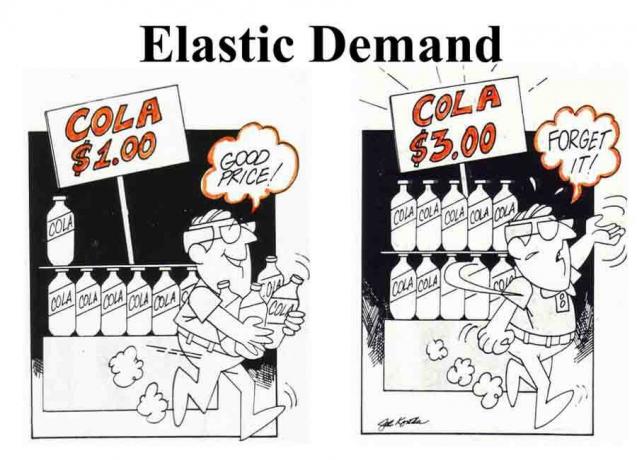The price elasticity of demand (commonly known simply as the price elasticity) measures the response rate of the quantity demanded due to a price change. The formula for the price elasticity of demand (Ep) is:
Ep: % Variation in quantity demanded /% Variation in price
Advertisements
In general terms it is said that if a small change in the price of a product is accompanied For a large change in quantity demanded, the price elasticity of demand is said to be elastic. And on the contrary, a product that is inelastic at the price, does not change the quantity demanded when the price changes.

Advertisements
The price elasticity of demand measures the responsiveness of demand to changes in the price of a particular good. If the price elasticity of demand is equal to 0, the demand is perfectly inelastic (that is, the demand does not change when the price changes). Values between zero and one indicate that demand is inelastic (this occurs when the percentage of change in demand is less than the percentage of change in price). When the price elasticity of demand is equal to one, the demand is unit elastic (the percentage change in demand is equal to the percentage change in price). Finally, if the value is greater than one, the demand is perfectly elastic (demand is affected to a greater extent by changes in price).
For example, if the quantity demanded of a good increases 18% in response to a 10% decrease in price, the price elasticity of demand would be 18% / 10% = 1.8. The degree to which the quantity demanded by good changes in response to a change in price can be influenced by a number of factors. Factors include the number of close substitutes (demand is more elastic if there are close substitutes) and whether the good is a necessity or luxury (necessities tend to have an inelastic demand while luxuries are more elastic).
Advertisements
Companies assess price elasticity of demand for various products to help predict the impact of a pricing on product sales. Typically, companies charge higher prices if demand for the product is price inelastic.


